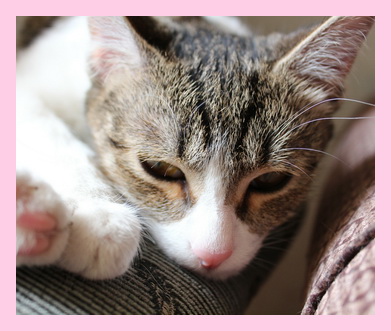The information contained in this sticky is provided for educational purposes only and is not intended to replace veterinary advice. The intention of this sticky is to open doors to understanding about the specific medical condition or topic, allowing for educated and on-going discussion with your vet.

|
Diabetic Cat Care Sick Mix Recipe for Syringe Feeding |
There's little more concerning than when a diabetic cat stops eating. Cats, diabetic or not, should not be permitted to go any longer than 24 hours without food as this can lead to an emergency condition called Hepatic Lipidosis, (aka HL). If your cat stops eating, it is likely you'll need to syringe feed and if on insulin, doses might need to be reduced. Should the period of anorexia last longer than 24 hours, a trip to the vet's is called for. Depending on lab work and how severe the anorexia or medical issue causing it is, other assisted feeding methods may be called for.
If you need to syringe or tube feed your cat, there are several formulas that can be used easily in a feeding syringe.
The first is Stage 1, all meat and broth baby food, with no onions, veggies or cornstarch, mixed with a spoonful of plain, unsweetened, full fat yogurt and a little warm water. Gerber has the ingredient of corn starch which leaves Beechnut with the proper ingredients out of the two popular brands available in the US - please be sure to check the ingredients. A minimum of 9 or 10 ounces of all meat an broth baby food should be given over a 24 hour period. This is NOT recommended for long term feeding so if this is fed for anything more than a few days, taurine should be added to it.
Another sick mix recipe which needs no supplementation and is often better received by the cat is pureed Fancy Feast in the cat's favorite flavor; mixed with a spoonful of full fat yogurt and some warm water or no salt chicken broth. This can be put in the blender and whipped up so it easily will move through a feeding syringe. Usually, 6 ounces daily will suffice, but larger cats or severely malnourished cats may need more.
If your cat is inappetant, ask your vet for a feeding syringe, or buy one made for infants available at dollar or drug stores. Typically, increasing the size of the hole is helpful when it comes to syringe feeding.
For unwell cats, B Complex and/or Super Bio Agaricis Mushroom (liquid version is better than capsules as it starts to work more quickly) are very helpful to deal with the physical stress to the body, and to boost the immune system.
Prescription foods such as Hills A/D have inferior ingredients, so ideally should not be used. If required, because they are high in carbs, it will be very important to closely monitor your cat's BG.
Something you can try to see if it will help your cat eat is Pepcid AC (original formula, 10% famotidine, 1/4 tablet BID). Alternatively, an appetite stimulant such as Cyproheptadine (Periactin), syringe feeding, or a feeding tube may be needed.
A cat that does not eat for more than 24 hours runs the risk of developing Hepatic Lipidosis, a life threatening condition.
Please consult your vet immediately if your cat refuses to eat for more than a day.
Please click here for more information on how to handle both syringe feeding and feeding tubes.
Many members have had to deal with an inappetant cat; please don't hesitate to post on forum for further information or for moral support.
© 2009-2024 Diabetic Cat Care - DCC's information may be used on other websites (with restrictions), for more information read All Rights Reserved